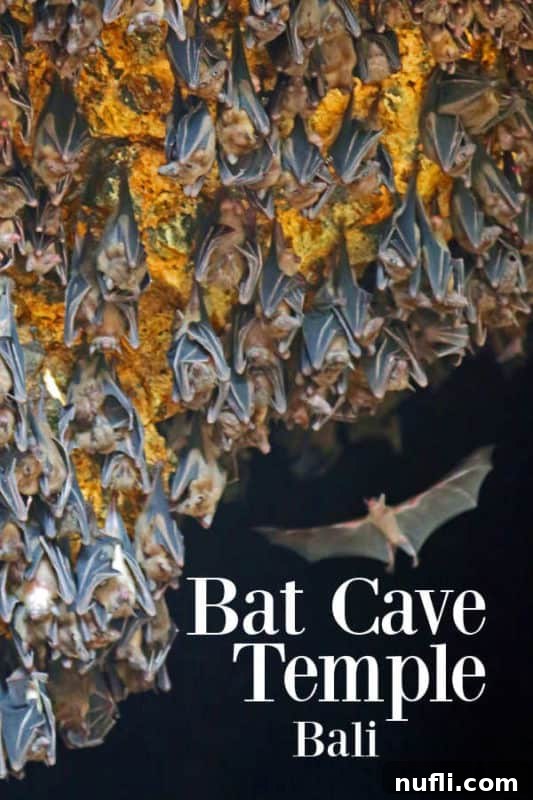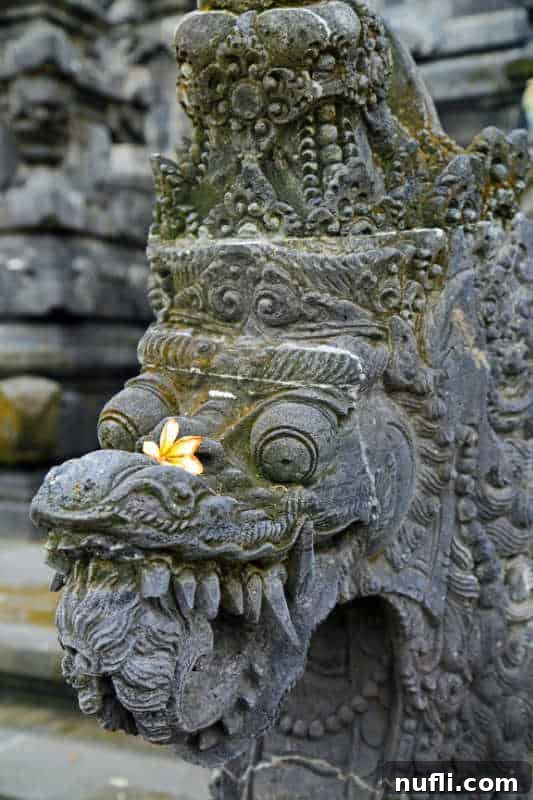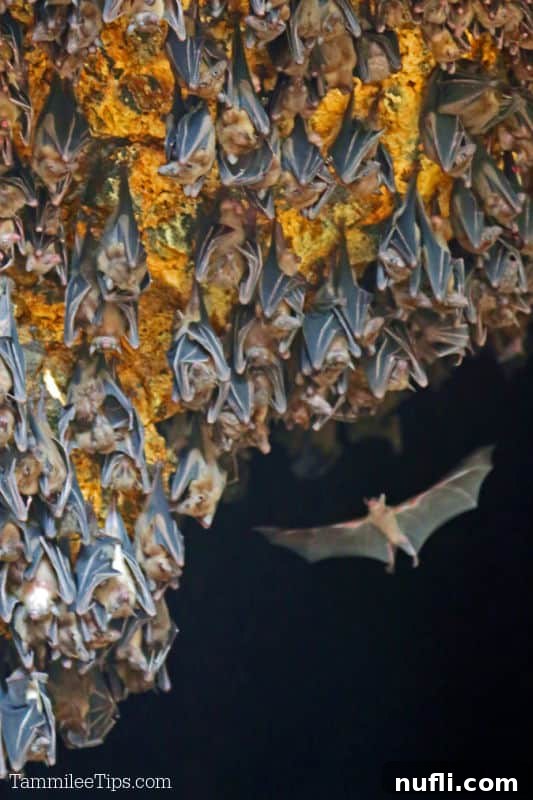A journey into the heart of Bali often reveals wonders beyond imagination, and for us, one such unforgettable encounter was a visit to the legendary Bat Cave Temple. When our local guide first mentioned “Goa Lawah Temple,” I admit my mind conjured images of ancient structures adorned with symbolic bat carvings or perhaps a quaint shrine dedicated to a bat deity. What awaited us, however, was far more spectacular and utterly unique: a profound spiritual sanctuary where a bustling community of thousands of real bats coexists with devout worshippers.
Nestled on the southeastern coast of Bali, Goa Lawah, which literally translates to “Bat Cave” in Balinese, is not merely a tourist attraction but one of the island’s most significant Hindu temples. It is classified as one of the Sad Kahyangan Jagat, the six holiest directional temples in Bali, playing a crucial role in maintaining the island’s spiritual balance. This sacred site offers a captivating blend of natural marvel and profound religious devotion, an experience that truly immerses you in the mystical essence of Bali.
To truly convey the awe-inspiring atmosphere of this place, I captured a brief video, offering a glimpse into the intimate proximity one shares with the cave’s nocturnal inhabitants. It’s a surreal dance between the ancient rituals of humanity and the primal existence of nature.

Quick Guide to Goa Lawah Temple (Bat Cave Temple Bali): Don’t have time to read the full article? Here are my top findings and essential links:
🏨 Find the Best Hotels and Vacation Rentals in Bali
📍 Book Exciting Tours and Experiences in Bali
Exploring the Mystical Goa Lawah Temple: Bali’s Bat Cave Sanctuary
The experience of standing at the threshold of Goa Lawah Temple is undeniably profound. It’s a fascinating paradox of simultaneous intrigue and reverence, a place where the earthly and the ethereal converge. One of my initial concerns, as with many visitors, was the potential for an overwhelming odor. To my pleasant surprise, the distinct “bat smell” I had mentally prepared for was remarkably subtle, almost unnoticeable amidst the fresh Balinese air and the scent of incense offered by worshippers. This perhaps speaks to the cave’s natural ventilation or simply the sheer volume of space, preventing any strong, lingering aroma.
The sheer number of bats is staggering; they cling to the cave ceiling and walls in a dense, living tapestry, creating an undulating spectacle of tiny, leathery wings. Despite their vast population, they remained undisturbed and within the cool confines of the cave during our visit, a testament to their established rhythm and the temple’s protective aura. It’s a truly humbling sight, observing these creatures in their natural habitat, seemingly oblivious to the human activity below, yet intrinsically linked to the spiritual narrative of the temple.

Goa Lawah is more than just a cave full of bats; it’s a meticulously maintained temple complex rich in Balinese Hindu culture and art. The main temple courtyard is a vibrant display of traditional Balinese architecture, featuring multi-tiered meru towers and intricate stone carvings that tell stories of deities and ancient myths. Lush tropical vegetation surrounds the complex, adding to its serene and mystical ambiance. The meticulous craftsmanship evident in every detail, from the moss-kissed stone guardians to the ornate shrines, highlights the deep spiritual significance this site holds for the local community.
Legend has it that the cave itself extends deep into the earth, possibly even connecting to Besakih Temple, Bali’s Mother Temple, high on Mount Agung. While this remains a myth, it underscores the profound spiritual connections woven into the fabric of Balinese geography and belief. The cave is believed to be a dwelling place for the Naga Basuki, a mythical dragon-like creature that guards the earth and plays a vital role in Hindu cosmology.

During our exploration, a delightful detail completely escaped my immediate notice. It wasn’t until I was reviewing our photographs much later that I spotted it: a subtly carved golden bat positioned directly above the temple’s ornate entrance. This small, elegant detail, easily overlooked amidst the grandeur, served as a charming reminder of the temple’s unique identity and the thoughtful integration of its natural inhabitants into its spiritual design. It was a wonderful post-trip discovery, adding another layer of appreciation for the artistry and symbolism embedded within Goa Lawah.


Tips for Visiting Goa Lawah Temple (Bat Cave Temple)
If your travels bring you to the enchanting island of Bali, a stop at Goa Lawah Temple is an absolute must. It offers a unique cultural and natural experience unlike any other. Here are a few essential tips to enhance your visit:
- Dress Code: As with all sacred sites in Bali, visitors are required to dress respectfully. This means covering your shoulders and knees. Don’t worry if you didn’t bring appropriate attire; sarongs and sashes are readily available for rent or purchase at the temple entrance for a small fee. This custom is not just a formality but a sign of respect for the local culture and religious practices.
- Best Time to Visit: While Goa Lawah is captivating at any time of day, many visitors recommend arriving in the late afternoon, just before sunset. This is when the bats begin to stir and emerge from the cave en masse, creating a spectacular natural phenomenon as they swarm out for their nightly hunt. It’s an unforgettable sight, truly illustrating the immense population within.
- Respectful Observation: Remember that this is an active place of worship. Maintain a quiet demeanor, especially near the shrines and where people are praying. While photography is generally allowed, always be mindful of worshippers and avoid using flash directly into the cave to minimize disturbance to the bats.
- Local Interaction: Upon entering, we were offered a complimentary necklace by a shopkeeper, a gesture that initially puzzled us. Our guide discreetly placed it in his car without comment, leaving us unsure whether it was a genuine act of kindness, a subtle marketing tactic, or perhaps a way to identify potential customers. Engaging with local vendors is part of the experience, but always be prepared for friendly overtures and feel free to politely decline if you’re not interested in purchasing anything.
- Entrance Fee: There is a modest entrance fee to Goa Lawah Temple, which goes towards the maintenance of the complex and supports the local community.
- Accessibility: The temple is relatively easy to access, with clear pathways. However, be prepared for some steps, especially around the main shrine areas.
Goa Lawah is strategically located on the main road between Kusamba and Padangbai, making it a convenient stop if you are exploring East Bali, or even as part of a day trip from popular areas like Ubud or Sanur. Its combination of natural wonder and profound spiritual significance makes it a truly unmissable highlight of any Balinese itinerary.

Beyond the mystical allure of the Bat Cave Temple, Bali offers a wealth of incredible experiences. Make sure to check out our comprehensive Bali Travel Tips for planning your perfect island escape. And for another unique wildlife encounter, don’t miss a visit to the famous Sacred Monkey Forest Sanctuary in Ubud, where mischievous macaques roam freely amidst ancient temples.
More Essential Bali Travel Articles to Inspire Your Trip
To further enrich your Bali adventure, explore these additional guides and stories:
- Discovering Bali on a Budget: A Groupon Trip Experience – Learn how to maximize your Bali experience without breaking the bank.
- Experiencing the Barong and Kris Dance Show in Bali – Dive into the vibrant world of Balinese mythology and traditional performance.
- A Fascinating Visit to a Bali Batik Factory – Explore the intricate art of Batik and perhaps bring home a unique souvenir.
- The Serenity of Saraswati Temple, Ubud – Uncover the beauty of this water temple, dedicated to the Hindu goddess of knowledge, music, and art.
For a complete resource on navigating this stunning island, be sure to check out our full Bali Travel Guide. From spiritual sites to pristine beaches, Bali promises an adventure for every traveler, and Goa Lawah Temple stands as a powerful testament to its unique charm.
